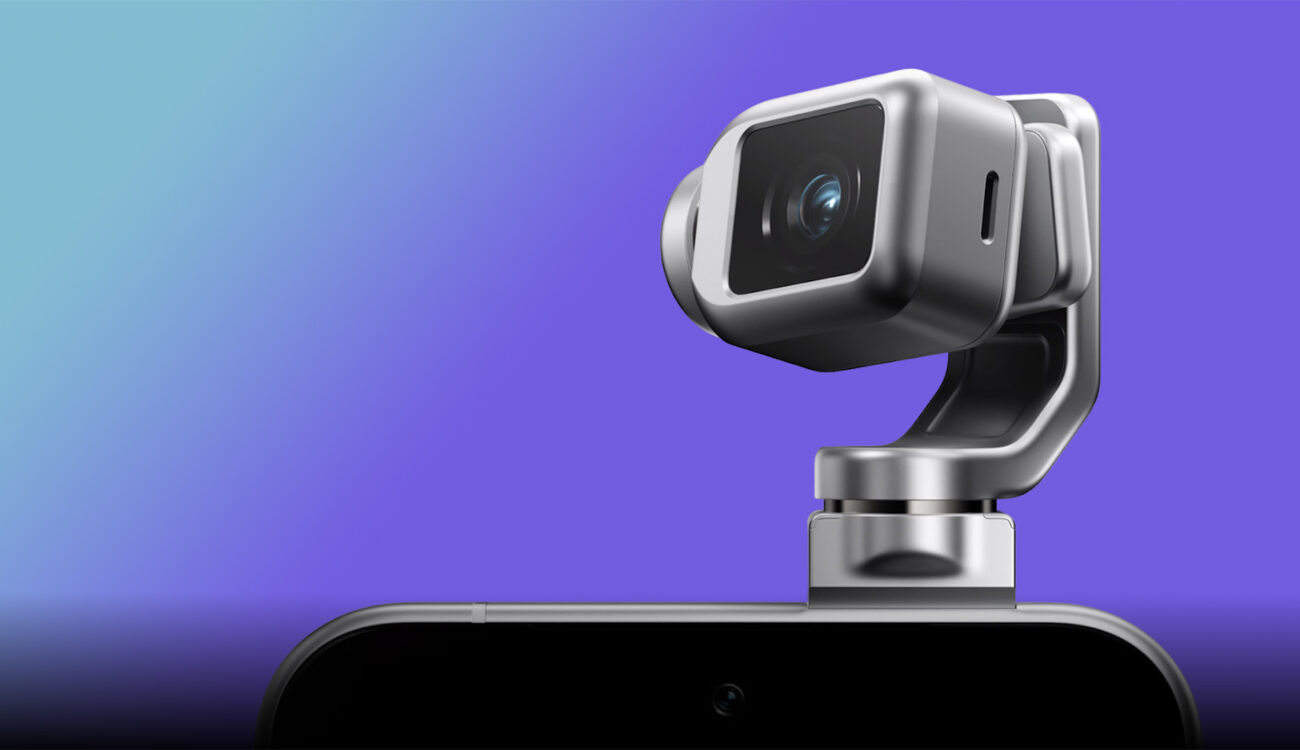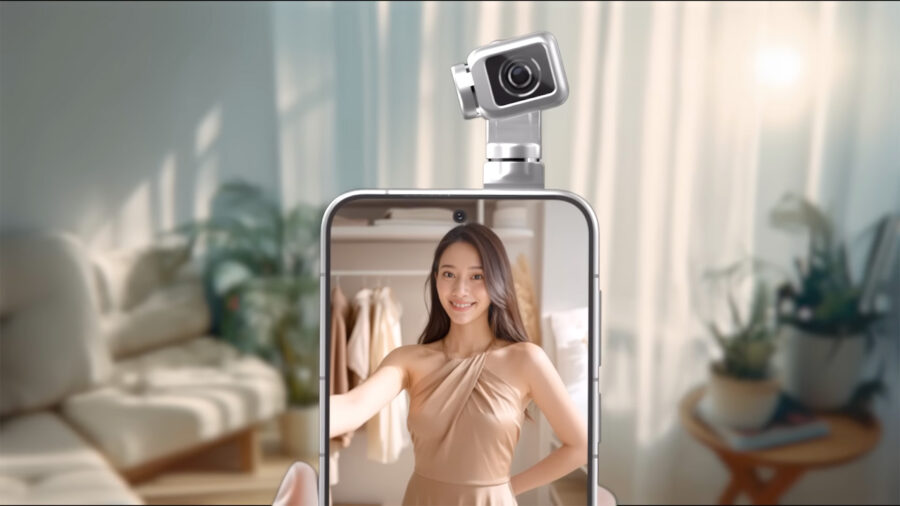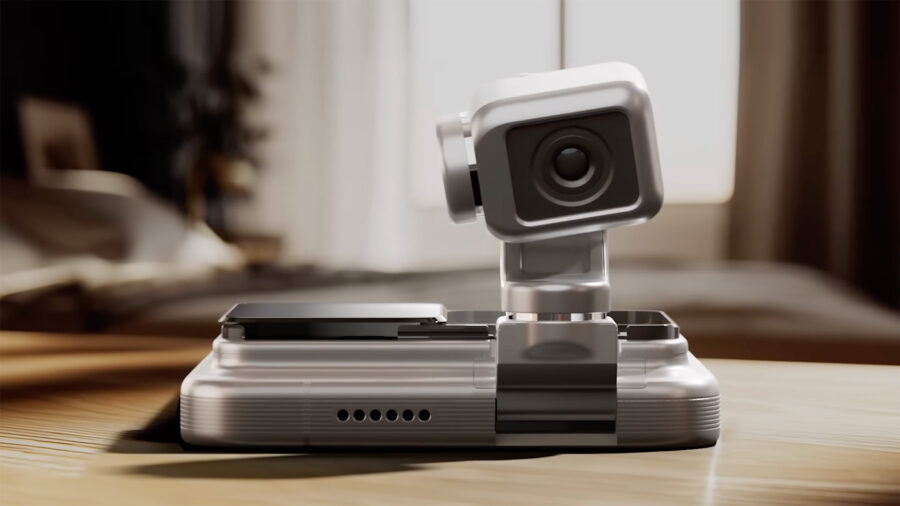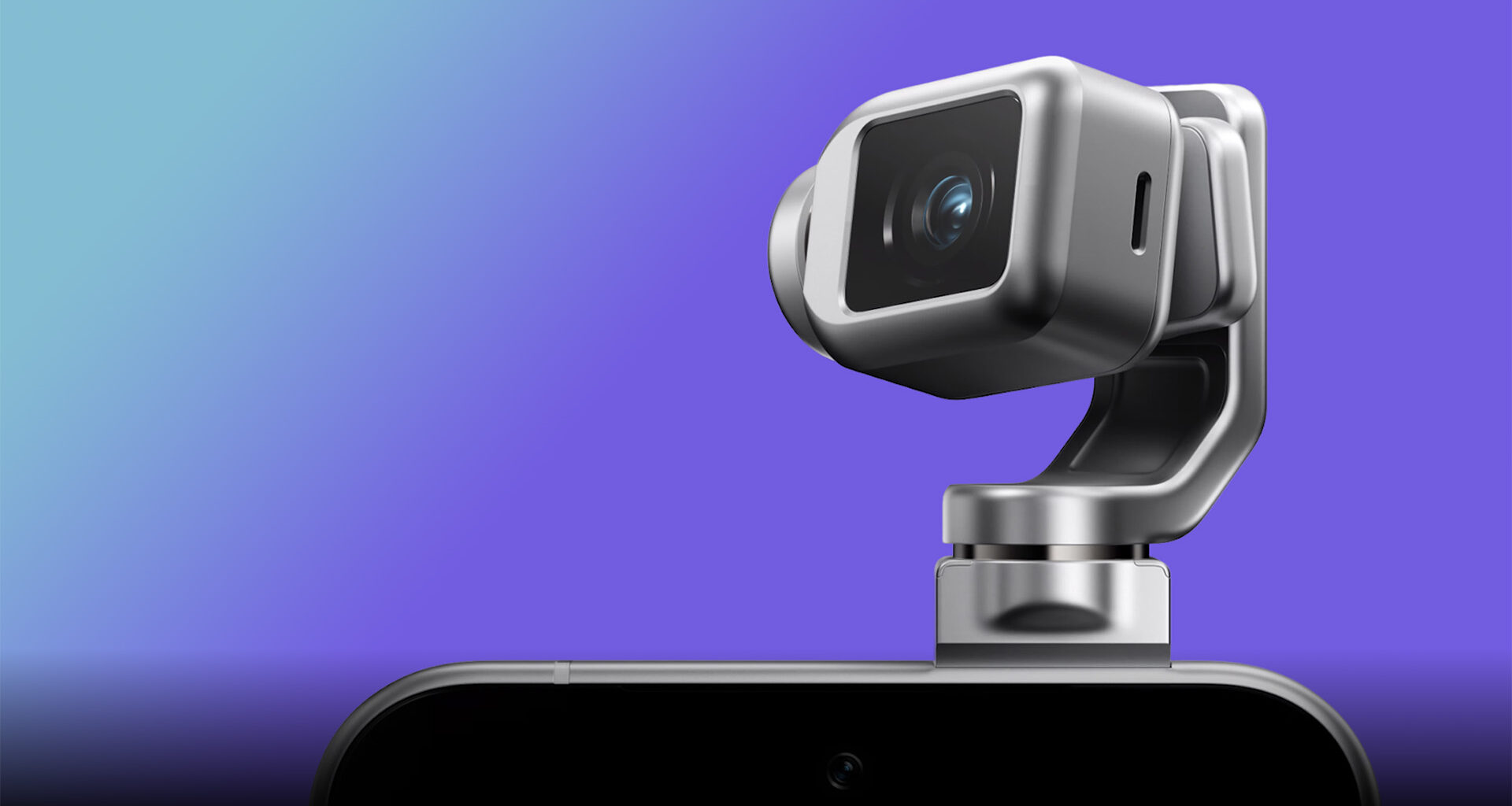
The teased “HONOR Robot Phone camera” puts a mechanically moving, AI-controlled camera on a fold-out arm, pointing to a smartphone that can track, reframe, and stabilize like a pocket gimbal. For filmmakers, that could shift certain one-person shoots from add-on rigs to the phone itself.
HONOR framed the concept as part of its long-term Alpha Plan and showed it alongside the Magic 8 series launch. What stands out for our audience is not the cute CGI tease, but the promise of a physically mobile camera head that can reposition autonomously. A number of outlets summarized the idea clearly: a gimbal-mounted camera that unfolds from the back of the phone, controlled by AI, with more details expected at MWC 2026.
HONOR goes “Wall-E” in what seems to be an all-AI generated teaser:
What a “built-in gimbal” could change on a shoot
If the camera module truly sits on a motorized arm, the phone would not only stabilize electronically, it could also move the lens in space. That matters for practical shooting: set the phone on a mini-tripod, tap to select a subject, and let the camera subtly pan or tilt to keep framing while you conduct an interview, demonstrate a product, or vlog without a camera operator. Reports describe the device as an AI-enabled, gimbal-mounted system, which aligns with this motion-first idea.
Context from a proven pocket gimbal – the DJI Osmo Pocket 3
CineD has spent real time reviewing a reference product in this category, the DJI Osmo Pocket 3. In our review we highlighted why mechanical stabilization still earns its keep over purely digital correction: smooth micro-movements, consistent horizon, and subject following in a truly pocketable tool. Those strengths made the Pocket 3 an unusually capable travel and run-and-gun camera in our testing.
That background helps explain why the HONOR Robot Phone camera is interesting. It attempts to bring the behavior of a pocket gimbal into a device you already carry. For certain creator workflows, the friction of adding a separate stabilizer is what prevents using it at all. If the phone can deliver reliable physical movement plus intelligent subject awareness, some shoots that currently require a gimbal might be handled by the phone on its own. Honor presents this as a step beyond an “AI phone,” into a device that senses context and acts on it.
 Still from HONOR’s teaser video about the Honor Robot Phone Camera. Image credit: HONORRealistic creator/filmmaker use casesHands-free presenter shots: Place the phone three feet away, let AI tracking keep head-and-shoulders framing during small movements at a desk or in a workshop demo.Walk-and-talks in tight spaces: Micro-pans and tilt corrections can clean up footsteps without a full handheld rig, useful for venue tours and event floor coverage.Product b-roll on a table: Slow, pre-programmed arcs or angle adjustments around an object, captured with consistent framing.Quick cutaways on documentaries: A compact “set and forget” angle when crew is minimal, provided the arm’s motion is quiet and predictable.
Still from HONOR’s teaser video about the Honor Robot Phone Camera. Image credit: HONORRealistic creator/filmmaker use casesHands-free presenter shots: Place the phone three feet away, let AI tracking keep head-and-shoulders framing during small movements at a desk or in a workshop demo.Walk-and-talks in tight spaces: Micro-pans and tilt corrections can clean up footsteps without a full handheld rig, useful for venue tours and event floor coverage.Product b-roll on a table: Slow, pre-programmed arcs or angle adjustments around an object, captured with consistent framing.Quick cutaways on documentaries: A compact “set and forget” angle when crew is minimal, provided the arm’s motion is quiet and predictable.
These are not replacements for cinema cameras or full gimbals. They are the types of shots that creators sometimes skip because of setup time. If mechanical range, response time, and noise characteristics are good, they become feasible with almost zero extra gear.
 HONOR announcing the HONOR ALPHA PLAN back in March, “a new corporate strategy to transform HONOR from a smartphone maker to a global leading AI device ecosystem company”. Image credit: HONORQuestions that still matter
HONOR announcing the HONOR ALPHA PLAN back in March, “a new corporate strategy to transform HONOR from a smartphone maker to a global leading AI device ecosystem company”. Image credit: HONORQuestions that still matter
HONOR has not disclosed sensor size, lens options, maximum arm travel, mechanical durability, or noise profile, and the teaser is still CGI. Filmmakers will want to know how much the arm can pan or tilt before hitting limits, how tracking behaves with occlusions, whether the phone coordinates arm motion with electronic stabilization, and how long the mechanism runs on battery during continuous video. Publications summarizing the announcement also note that more specifics are slated for MWC 2026.
 Still from Honor’s teaser video about the Honor Robot Phone Camera. Image credit: HonorHow this fits the broader HONOR roadmap
Still from Honor’s teaser video about the Honor Robot Phone Camera. Image credit: HonorHow this fits the broader HONOR roadmap
The HONOR Robot Phone camera concept arrives as HONOR pushes a wider AI strategy around its current Magic 8 line, positioning the Robot Phone as a “new species” of device that combines robotics with multimodal AI. For filmmakers, that matters only if it translates to dependable autofocus, subject recognition, and motion control that works in the field, not just in demos. We will be watching for practical demos and hands-on time in Barcelona.
Bottom line: HONOR Robot Phone camera
If the HONOR Robot Phone camera ships with a quiet, reliable arm, usable tracking, and coherent stabilization, it could join tools like the DJI Osmo Pocket 3 as a legitimate “always-with-you” motion camera, one that leans on AI to trim setup time for solo shooters. Until we see hardware, treat it as a promising direction rather than a solved problem.
Will a phone that moves its own lens change how you cover quick scenes when you do not want to unpack a gimbal, or will it remain a clever concept until the mechanics prove themselves?

